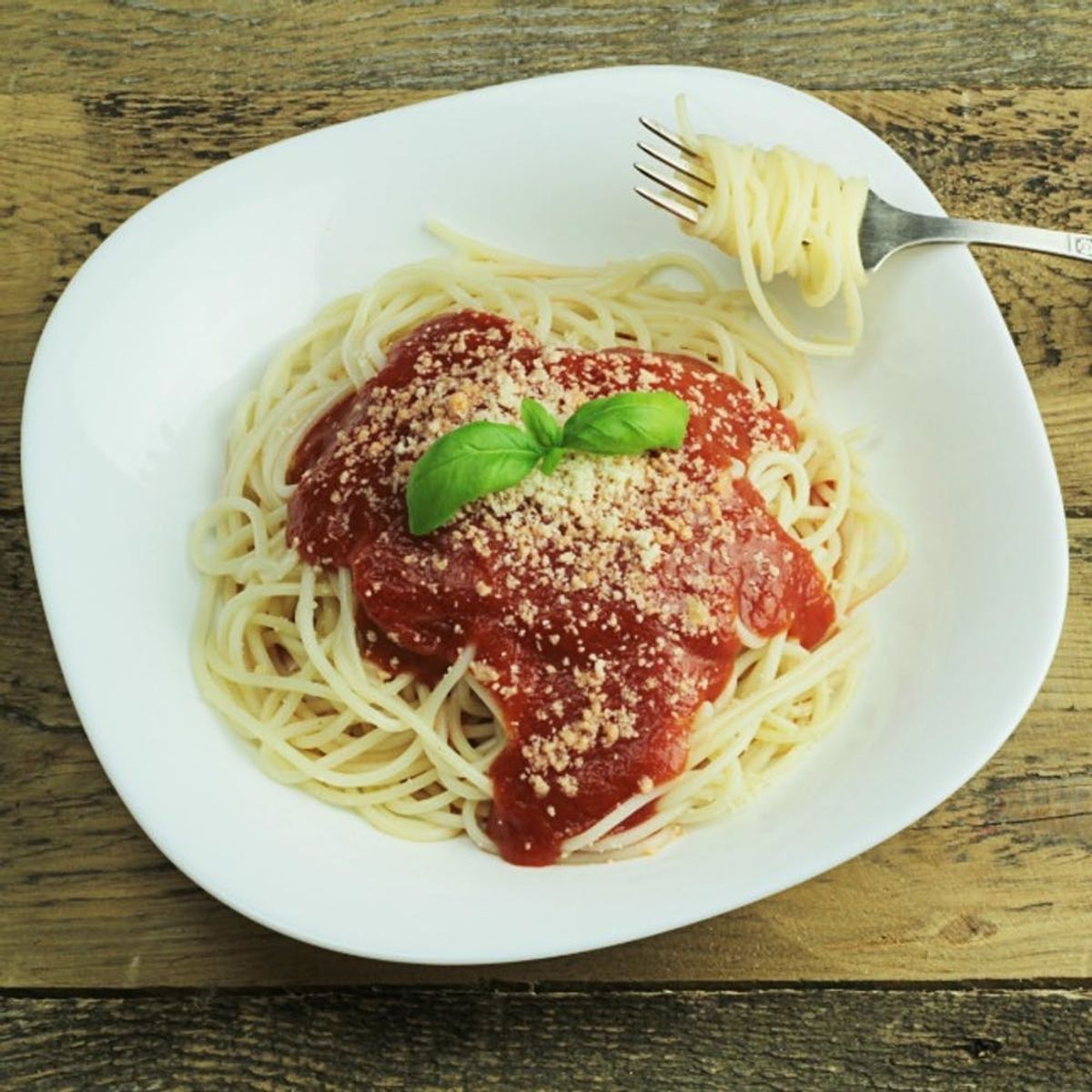These ingredients help add flavor to your sauces.
Easy Tricks to Add Flavor to Your Sauces

Clinging to strands of perfectly al dente angel hair pasta or spooned over slices of a hearty roast, sauce can make or break a meal. But coaxing out maximum flavor from your marinara or bordelaise isn’t always easy. At the end of the day, you’ll probably have to tweak your concoction a bit before serving, adding in ingredients the recipe may not have called for in order to achieve the perfect balance of savory, sweet, and tangy. And when that time comes, the foods and spices below are always there to save the day. So clear out some space in your fridge and cupboard to make room for these sauce saviors.

Savory Ingredients
Sometimes after sautéeing, simmering, and reducing for hours, your sauce may end up lackluster. Oof. Luckily, these potent flavor powerhouses are bursting with naturally occurring glutamates and glutamic acid, which are what provide that savory umami flavor. Start small, adding a little bit here and there until you’re satisfied.
Miso: A small spoonful of this fermented soy bean paste adds a salty, nutty kick. Yellow miso is the most versatile, but you can opt for red if you want an even deeper, more earthy flavor.
Shiitake Powder: You may have spent the time to soften dried shiitakes in hot water before using them in a dish, but adding just a pinch of dried shiitake powder to your pot is a much easier way to add the same umami to your meals. You can buy it online, or purchase dried shiitakes at the grocery store and pulverize them in a food processor.
Maggi: Beloved in kitchens around the world, a few drops of Maggi seasoning sauce adds a rich, savory flavor to what you’re cooking.
Soy Sauce: It will add flavor along with salt and helps make the other ingredients shine.
Soffrito: Start your sauce with Italian soffrito (which is different than the Caribbean version), a sautéed mix of finely diced celery, onion, and carrot. You can cook it just until the onions start to become translucent for a more mild flavor, or at a low heat, adding a splash of water, broth, or wine to keep it from scorching, until it’s broken down and caramelized for even deeper flavor.
Tomato Paste: You might not think of using tomato paste in anything but Italian food, but a dollop of the stuff, which is a perfect balance of savory, sweet, and tangy flavor, can enrich any dark sauce.
Parmesan Rinds: If you’re starting with a stock or broth, try simmering a few Parmesan rinds in the liquid before you start to infuse the mixture with the Parm’s cheesy, nutty flavor.
Sweet Ingredients
Even if you’re making a savory sauce, sometimes just a hint of sweetness can help round it out and deepen the rich flavors that you’ve developed. Start small — you can always add more, but it’s a lot harder to take any out.
Caramelized Onions: Make a big batch of caramelized onions, then puree them. Freeze them in ice cube containers, transfer to an air-tight container, and grab one or two from the freezer to drop in your pot whenever your sauce needs a dose of nuanced sweetness.
Brown Sugar: Flavored with molasses, brown sugar brings a hint of rich sweetness to your meals.
Mirin: A splash of Mirin, a sweet rice wine from Japan, can help balance out an overly savory sauce.
Acidic Ingredients
If your sauce is a little too rich, sweet, or boring, adding in an acidic element can help liven things up. You’ll want to add them near the end of cooking, so their tart flavors aren’t muddled by the heat.
Lemon Juice: Lemon juice (and zest) can liven up sauces that are cloying or fatty, while also adding a new element of flavor thanks to its own citrusy profile.
Vinegar: Cider vinegar, red wine vinegar, rice vinegar, and white wine vinegar are all relatively mild and slightly sweet, while balsamic can add a deeper flavor when it’s added. Or, in super-savory sauces, you can try Chinkiang vinegar, a Chinese condiment that’s tangy and savory, with a taste that’s sort of like a mix between balsamic and Worcestershire sauce.
Wine: A dry red or white wine (depending on the color of your sauce) can add oomph to your dish, and bring out any alcohol-soluble flavor compounds that are in your meal.
Sumac: A sprinkle of dried sumac, a tangy herb popular in Middle Eastern cuisine, brings brightness to what you’re cooking without adding additional liquid.
Still not satisfied with your sauce? Try reducing it further, to help concentrate the flavors. Then, stir in a nob or two of butter right before serving, to add a silky texture and added bit of richness. Because if there’s one cooking truth we can all agree with, it’s that butter makes everything better.
For more cooking tips and tricks to help you become a pro in the kitchen, follow us on Pinterest.
(Photo via Paweł Rękas/Unsplash)



















